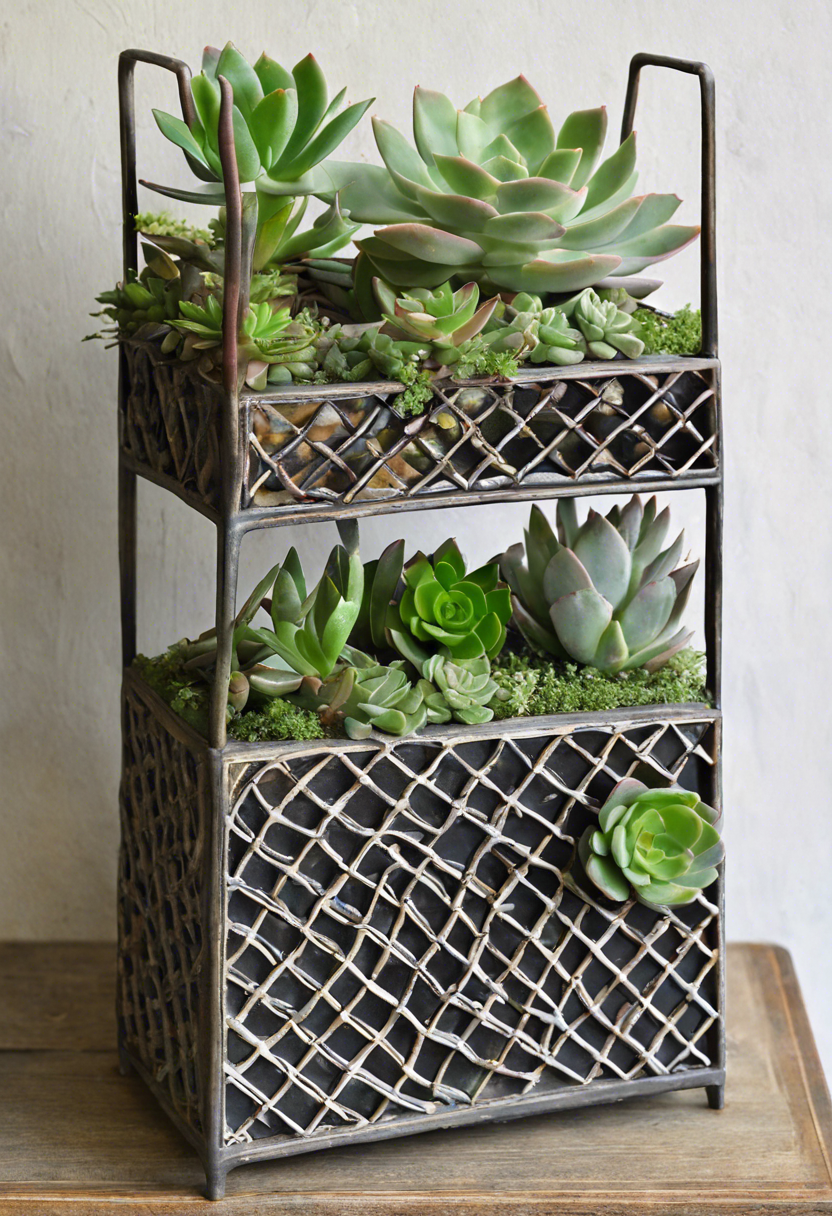
A succulent lattice planter is a creative and visually appealing way to incorporate succulents into your outdoor space. By utilizing lattice panels attached to a railing, you can create a unique vertical garden where the succulents grow through the gaps, creating a stunning and vibrant display.
Design and Construction
The design of a succulent lattice planter involves attaching lattice panels to a railing or any other vertical structure. The lattice panels can be made of various materials such as wood, metal, or plastic. They feature a grid-like pattern with small gaps between the slats. These gaps are where the succulents will be planted.
To construct the planter, start by measuring the dimensions of the area where you want to install the lattice panels. Then, cut the panels to fit the desired size using a saw or appropriate cutting tool. Attach the panels to the railing using screws or zip ties, ensuring they are securely in place.
Selecting and Planting Succulents
Choosing the right succulents is crucial for a successful lattice planter. Opt for varieties that are well-suited for outdoor conditions and can thrive in your climate. Popular choices include echeverias, sedums, aeoniums, and sempervivums. Consider selecting succulents with different colors, textures, and growth habits to create an interesting and diverse display.
To plant the succulents, gently remove them from their nursery pots, being careful not to damage the roots. Insert each succulent through the gaps in the lattice panels, ensuring the roots are securely positioned on the other side. Gently push the soil around the roots to provide stability and support.
Maintenance and Care
Proper maintenance is essential to keep your succulent lattice planter thriving. Here are some key care tips:
- Watering: Succulents have low water requirements and are susceptible to root rot if overwatered. Allow the soil to dry out completely between waterings, and ensure the planter has adequate drainage.
- Sunlight: Most succulents thrive in bright, indirect sunlight. Place your lattice planter in a location that receives several hours of sunlight each day.
- Pruning: Trim any dead or wilted leaves or stems to promote healthy growth and maintain the aesthetics of the planter.
- Fertilizing: Succulents generally don’t require frequent fertilization. Use a balanced, water-soluble fertilizer diluted to half strength once or twice a year during the growing season.
Regularly inspect your succulent lattice planter for pests such as mealybugs or aphids. If you notice any infestation, treat it promptly with appropriate organic or chemical controls.
Benefits of a Succulent Lattice Planter
There are several advantages to incorporating a succulent lattice planter into your outdoor space:
- Space-saving: By utilizing vertical space, a lattice planter allows you to grow a variety of succulents without taking up valuable floor space.
- Visual appeal: The lattice panels and succulents create a visually stunning display, adding a touch of beauty and elegance to your outdoor area.
- Easy accessibility: Having the succulents at eye level makes it convenient to admire and care for them.
- Low maintenance: Succulents are known for their resilience and ability to thrive in various conditions with minimal care.
In conclusion, a succulent lattice planter offers a unique and attractive way to incorporate succulents into your outdoor space. By following the design and construction steps, selecting suitable succulents, and providing proper care, you can create a beautiful vertical garden that will be the envy of your neighbors.